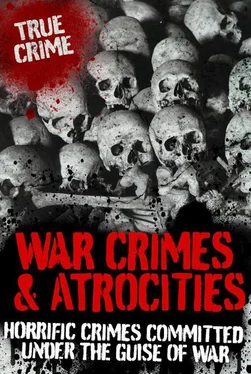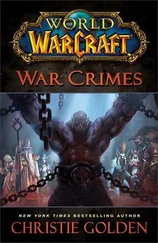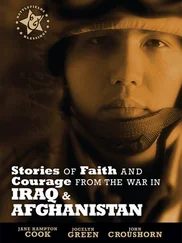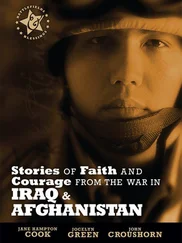PART SEVEN: 21st CENTURY – THE WAR CRIMES CONTINUE
1974–2003

Although the Iraqi people have suffered the atrocities inflicted by the US military, possibly the greatest threat to them over the years has been Saddam Hussein’s regime. For over two decades he has terrorized, killed, tortured and raped the Iraqi people and their neighbours. Under his regime it is fair to say that many hundreds of thousands have died as a direct result of Hussein’s actions, a vast majority of them being Muslims. He has used a wide range of torture methods, including the gouging out of eyes, severe beatings and electric shocks, leaving many of his victims dead or with permanent physical and pschological damage.
It has been estimated that during Hussein’s 1987–88 campaign of terror against the Kurds, as many as 100,000 were killed and 2,000 of their villages destroyed. The use of chemical agents, such as mustard gas and nerve agents, have resulted in some 30,000 Iraqi and Iranian deaths. Possibly the worst attack was the one on Halabja which resulted in approximately 5,000 deaths.
Freedom of worship was also restricted, as Hussein’s regime curbed their religious practices, including a ban on communal Friday prayer and funeral processions. His oppressive government policies have led to as many as 900,000 Iraqis, mainly Kurds, fleeing to the north of the country to avoid having to renounce their Kurdish identity or lose their property.
During his regime it is also estimated that as many as 400,000 Iraqi children under the age of five, unnecessarily died of either malnutrition or disease. The Oil-for-Food Programme, which was established by the United Nations in 1995 and terminated in late 2003, was intended to allow Iraq to sell oil on the world market in exchange for food, medicine and other humanitarian needs for ordinary Iraqi citizens without allowing Iraq to rebuild its military. However, Hussein’s regime blocked the access of international workers, who were supposed to ensure the correct distribution of the supplies. During Operation Iraqi Freedom, coalition forces uncovered military warehouses which were full of supplies that had never reached their intended destination – the Iraqi people.
Saddam Hussein’s regime has also been known to carry out frequent executions. For example, in 1984 4,000 prisoners were killed at Abu Ghraib prison; 3,000 prisoners were killed at the Mahjar prison from 1993–98; 2,500 prisoners were executed between 1997 and 1999 in what has been described as a ‘prison cleansing programme’; 122 political prisoners were executed at Abu Ghraib prison in February/March 2000; 23 political prisoners were executed at Abu Ghraib prison in October 2001; and at least 130 Iraqi women were beheaded between June 2000 and April 2001.
THE ANFAL CAMPAIGN
One of the worst campaigns mounted by the regime of Saddam Hussein was the anti-Kurdish Anfal campaign in 1988. This was a ‘cleansing’ campaign aimed at the Kurdish population, who are considered to be the world’s largest nation who do not actually possess a state of their own. Their territory is divided between Turkey, Iran, Iraq and Syria, with as many as 4 million Kurds being concentrated in Iraq.
When Hussein came into power, it appeared to bode well for the Kurds, especially when his Ba’ath Party made an agreement with the Kurdish rebel groups. This agreement granted them the right to use and broadcast their own language, as well as giving them a considerable amount of political independence. However, it wasn’t long before the agreement began to break down, when the Ba’ath Party started to evict Kurdish farmers, replacing them with poor Arab tribesmen and women. In March 1974, the Kurdistan Democratic Party (KDP) retaliated, which sparked off a full-scale war. Villagers were forcibly removed from their homes and eventually 130,000 Kurds fled to Iran.
It was these refugees, the Barzani tribespeople, who would fall prey to one of the worst cases of genocide of male members of a population the world had ever seen. In 1983, the Iraqi security forces started to round up all the males of the Barzani tribe from four refugee camps near Arbil. Just as dawn broke the soldiers stormed into the camps, taking captive all the male members of the tribe, including an old, mentally deranged man who was usually tied up for his own safety and a preacher who was on his way to the Mosque to call for morning prayer. The soldiers broke down doors and searched every house. In fact, they searched everywhere – inside chicken coops, water tanks, refrigerators – anywhere that it was possible someone could be hiding. Women cried, desperately hanging onto their sons, as the soldiers rounded up any males over the age of 13 and took them away to face their final fate. None of these men were ever seen again. The women pleaded with the soldiers not to take their men away, as Saddam Hussein had already hinted what he intended to do to the Barzani tribesmen. This earlier operation foreshadowed the techniques that would be used on a much larger scale during the Anfal campaign.
In March 1987, Hussein’s cousin, Ali Hassan al-Majid, was appointed secretary general of the Ba’ath Party of the northern region, which included the Kurdish dominated area. He had a reputation for brutality and following the Iraqi’s army control of the Kurdish insurgents, he took the matter into his own hands. His new campaign of terror became known as ‘al-Anfal’ (The Spoils), which took place between 23 February and 6 September, 1988. The campaign was broken down into eight different stages, with seven of them directly targeting areas controlled by the Patriotic Union of Kurdistan (PUK), which had been founded in 1975 by Jalal Talabani.
Al-Majid amassed around 200,00 soldiers, supported by air attacks, against a poorly-matched few thousand Kurdish guerillas. They went to work rounding up all the villagers, regardless of gender or age, and transported them to detention centres, where they were subjected to gendercidal selection. Any adult or teenage males (those considered to be of fighting age) were separated from the remainder of the community. Small children were allowed to stay with their mothers, while the elderly or infirm were taken away to separate living quarters.
The men were divided into smaller groups and hustled into large rooms or halls, which soon became grossly overcrowded. Beatings were almost routine and after several days of inhuman treatment, they were trucked out of the centres to be killed in mass executions. Many of the prisoners were lined up in front of pre-dug mass graves and shot from the front. Others were made to lie down in pairs next to mounds of fresh corpses, before they too were killed. Others, who had been bound together, were made to stand on the edges of the graves and shot from behind so they fell face-first into the pits. When they had finished their killing spree, the soldiers used bulldozers to roughly cover the graves of literally thousands of Kurdish males. Some of the men did not even make it as far as the ‘slaughter stations’. they were simply lined up and shot at their point of capture, by firing squads.
Although the aim of the al-Anfal campaign was to cleanse the Kurdish population of its males, thousands of women, children and elderly people perished as well. Mass executions of women and children were known to have taken place at a site on Hamrin Mountain, between the cities of Tikrit and Kurkuk. Those who did not die in the executions were trucked off to resettlement camps, where conditions were both squalid and insanitary, resulting in the death of thousands more, the majority of whom were children.
Читать дальше













